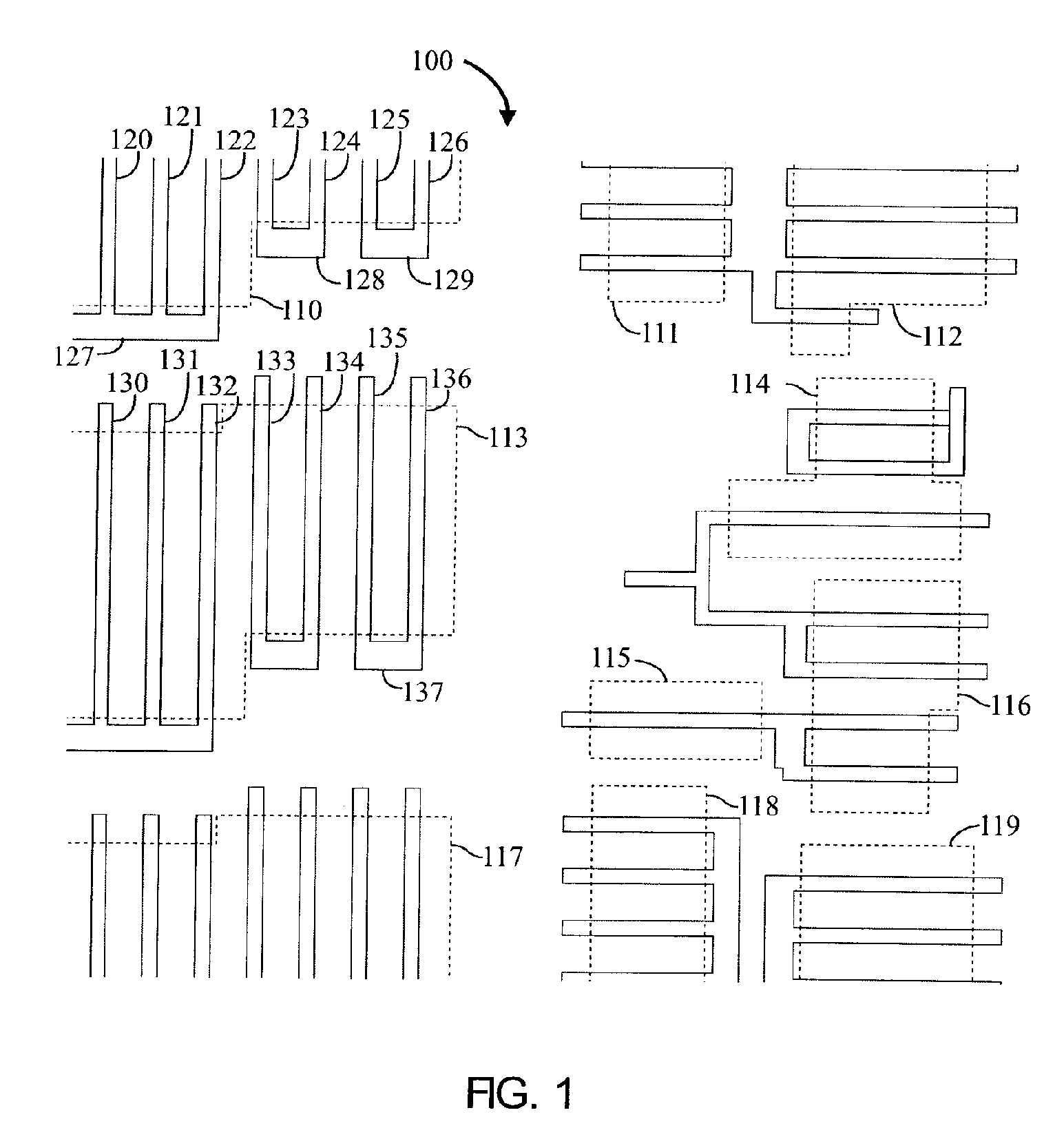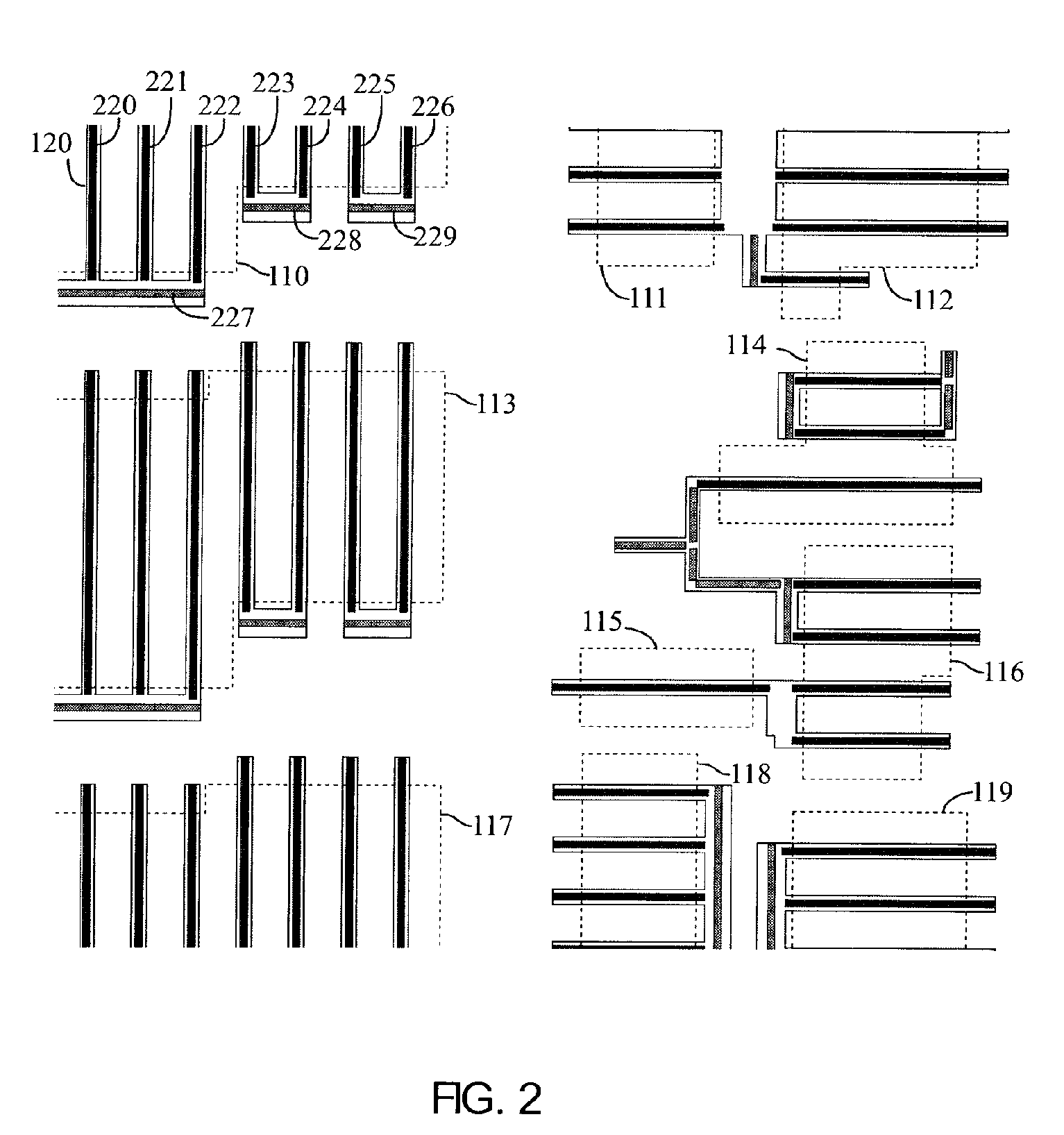Method For Fabricating Integrated Circuit Features
a technology of integrated circuits and features, applied in the field of integrated circuit fabrication, can solve the problems of inability of optical lithography to fabricate ic features with the prior art method of optical lithography is problematic, and the inability of optical lithography to achieve such diminutive line widths, so as to prevent the expansion of edge based image transfer shapes, save costs, and optimize use
- Summary
- Abstract
- Description
- Claims
- Application Information
AI Technical Summary
Benefits of technology
Problems solved by technology
Method used
Image
Examples
Embodiment Construction
[0039] The invention will now be described with reference to the accompanying figures. In the figures, various aspects of the structures have been shown and schematically represented in a simplified manner to more clearly describe and illustrate the invention.
[0040] By way of overview and introduction, the present invention is directed to a method for conversion of an existing integrated circuit (“IC”) design into a set of masks that optimize use of an edge based image transfer process for fabrication of an IC. An edge based image transfer mask is generated that fabricates an optimized number of edge shapes in the IC pattern. Then a block mask is generated that removes residual sections of the edge based image transfer mask. Finally, a lithography mask is generated for fabrication of any remaining IC shape in the IC pattern that cannot be generated through edge based image transfer. The present invention is a novel method that through an iterative process that selectively creates a...
PUM
| Property | Measurement | Unit |
|---|---|---|
| thickness | aaaaa | aaaaa |
| circuit density | aaaaa | aaaaa |
| s wavelength | aaaaa | aaaaa |
Abstract
Description
Claims
Application Information
 Login to View More
Login to View More - R&D
- Intellectual Property
- Life Sciences
- Materials
- Tech Scout
- Unparalleled Data Quality
- Higher Quality Content
- 60% Fewer Hallucinations
Browse by: Latest US Patents, China's latest patents, Technical Efficacy Thesaurus, Application Domain, Technology Topic, Popular Technical Reports.
© 2025 PatSnap. All rights reserved.Legal|Privacy policy|Modern Slavery Act Transparency Statement|Sitemap|About US| Contact US: help@patsnap.com



